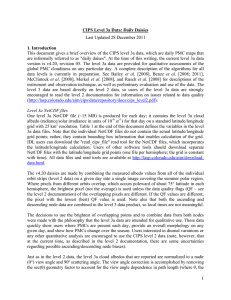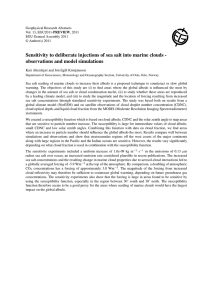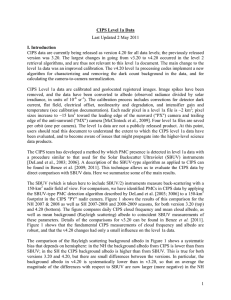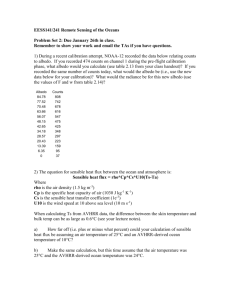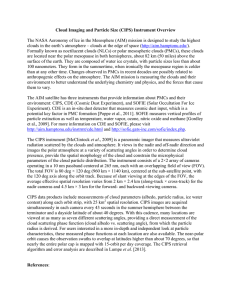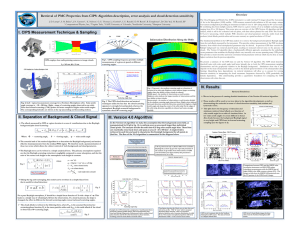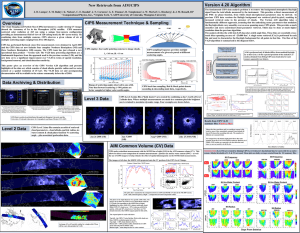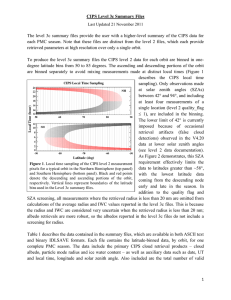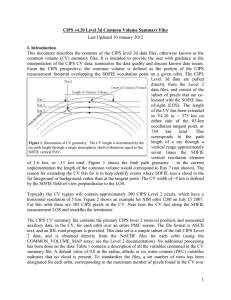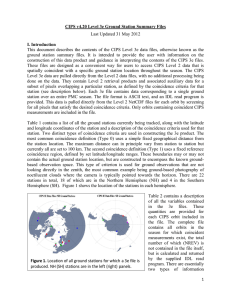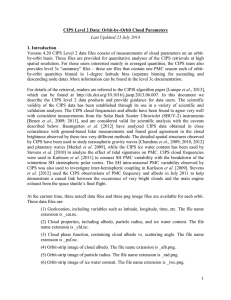Last updated 13 January 2012 CIPS Data Overview
advertisement
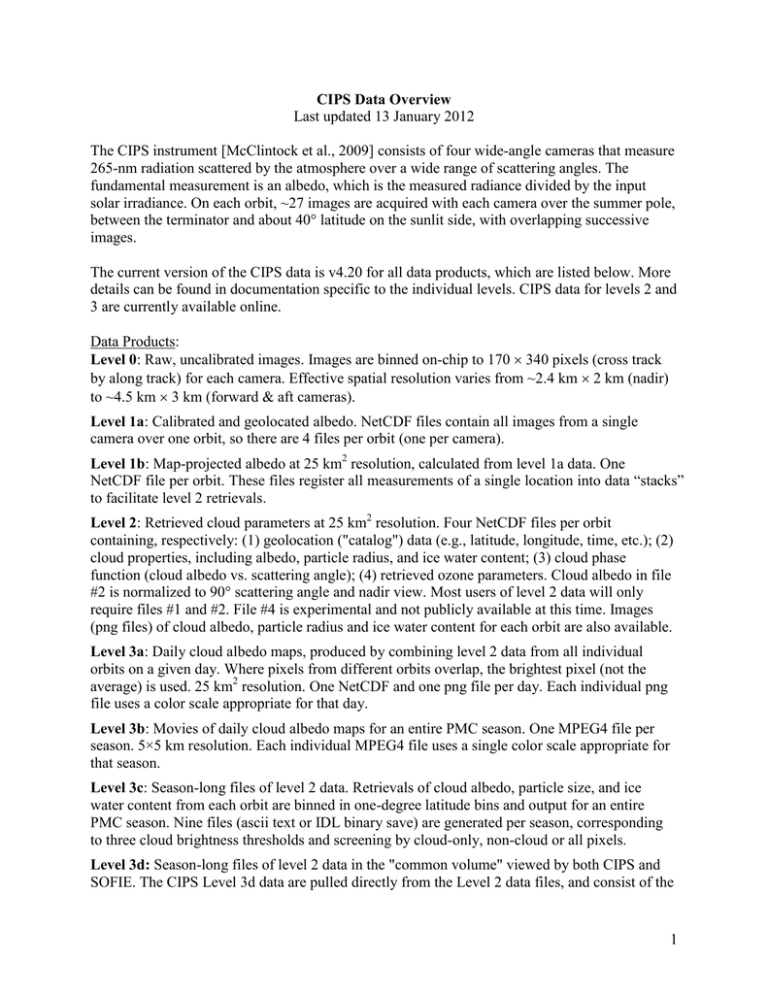
CIPS Data Overview Last updated 13 January 2012 The CIPS instrument [McClintock et al., 2009] consists of four wide-angle cameras that measure 265-nm radiation scattered by the atmosphere over a wide range of scattering angles. The fundamental measurement is an albedo, which is the measured radiance divided by the input solar irradiance. On each orbit, ~27 images are acquired with each camera over the summer pole, between the terminator and about 40° latitude on the sunlit side, with overlapping successive images. The current version of the CIPS data is v4.20 for all data products, which are listed below. More details can be found in documentation specific to the individual levels. CIPS data for levels 2 and 3 are currently available online. Data Products: Level 0: Raw, uncalibrated images. Images are binned on-chip to 170 340 pixels (cross track by along track) for each camera. Effective spatial resolution varies from ~2.4 km 2 km (nadir) to ~4.5 km 3 km (forward & aft cameras). Level 1a: Calibrated and geolocated albedo. NetCDF files contain all images from a single camera over one orbit, so there are 4 files per orbit (one per camera). Level 1b: Map-projected albedo at 25 km2 resolution, calculated from level 1a data. One NetCDF file per orbit. These files register all measurements of a single location into data “stacks” to facilitate level 2 retrievals. Level 2: Retrieved cloud parameters at 25 km2 resolution. Four NetCDF files per orbit containing, respectively: (1) geolocation ("catalog") data (e.g., latitude, longitude, time, etc.); (2) cloud properties, including albedo, particle radius, and ice water content; (3) cloud phase function (cloud albedo vs. scattering angle); (4) retrieved ozone parameters. Cloud albedo in file #2 is normalized to 90° scattering angle and nadir view. Most users of level 2 data will only require files #1 and #2. File #4 is experimental and not publicly available at this time. Images (png files) of cloud albedo, particle radius and ice water content for each orbit are also available. Level 3a: Daily cloud albedo maps, produced by combining level 2 data from all individual orbits on a given day. Where pixels from different orbits overlap, the brightest pixel (not the average) is used. 25 km2 resolution. One NetCDF and one png file per day. Each individual png file uses a color scale appropriate for that day. Level 3b: Movies of daily cloud albedo maps for an entire PMC season. One MPEG4 file per season. 5×5 km resolution. Each individual MPEG4 file uses a single color scale appropriate for that season. Level 3c: Season-long files of level 2 data. Retrievals of cloud albedo, particle size, and ice water content from each orbit are binned in one-degree latitude bins and output for an entire PMC season. Nine files (ascii text or IDL binary save) are generated per season, corresponding to three cloud brightness thresholds and screening by cloud-only, non-cloud or all pixels. Level 3d: Season-long files of level 2 data in the "common volume" viewed by both CIPS and SOFIE. The CIPS Level 3d data are pulled directly from the Level 2 data files, and consist of the 1 subset of pixels that are co-located with the SOFIE line-of-sight (LOS). The CIPS level 3d file contains the primary CIPS level 2 retrieval products and associated auxiliary data, in the CV, for each orbit over an entire PMC season. The file format is ASCII text, and an IDL read program is provided. References: McClintock, W.E., et al., The cloud imaging and particle size experiment on the Aeronomy of Ice in the Mesosphere mission: Instrument concept, design, calibration, and on-orbit performance, doi: 10.1016/j.jastp.2008.10.011, 2009. For questions or comments, please contact Cora Randall (randall at lasp.colorado.edu). 2
